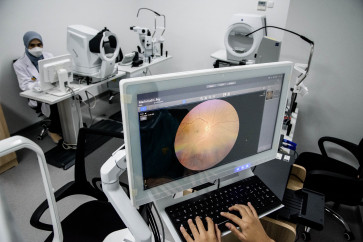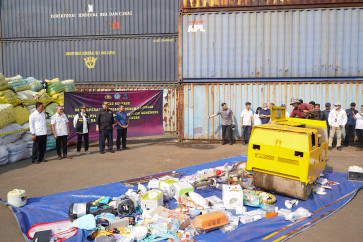Purchasing power on the up, as inflation under control
Consumer spending in the first five months of 2010 is showing that the purchasing power of Indonesians is growing stronger, while price inflation in the economy remains under control
Change Size

C
onsumer spending in the first five months of 2010 is showing that the purchasing power of Indonesians is growing stronger, while price inflation in the economy remains under control.
As of the end of May, the total spending on daily consumer goods reached Rp 44 trillion (US$4.84
billion), up 9 percent compared to the same period last year. Inflation in May reached 4.16 percent year-on-year, still below the central bank’s plus-minus 5 percent estimate.
A study by the Nielsen Company estimates spending on daily goods may grow 15 percent this year, given the favorable market conditions affecting the purchasing power.
“Higher consumer goods sales will be seen in the third quarter of the year with the Idul Fitri celebrations,” Nielsen retailer services director Yongky Susilo said Wednesday.
The total sales of consumer goods could reach Rp 115 trillion by the end of the year, an increase from approximately Rp 99.65 trillion in 2009, Yongky said, adding that this figure could be higher if Indonesian consumers allocated less to savings.
According to a survey conducted among 1,781 respondents, more than half of spending in the first five months of 2010 was on fresh food, rather than frozen foods, groceries and personal care products.
While Indonesia was witnessing a boom in modern markets in its cities, most people still rely on traditional markets for their daily needs, Yongky said.
“This is mainly driven by the function of traditional outlets, which support consumers’ basic needs, such as commodities. Traditional markets are also often within walking distance, but people need transportation to get to most modern outlets.”
The survey shows that consumers visit the traditional markets 25 times a month for traditional groceries, 12 times to go to wet markets and 19 times to vegetable vendors. Meanwhile, hypermarkets were visited only twice a month; supermarkets three times and convenience stores seven times.
People select different outlets for different kinds of goods, Yongky said. (not)









